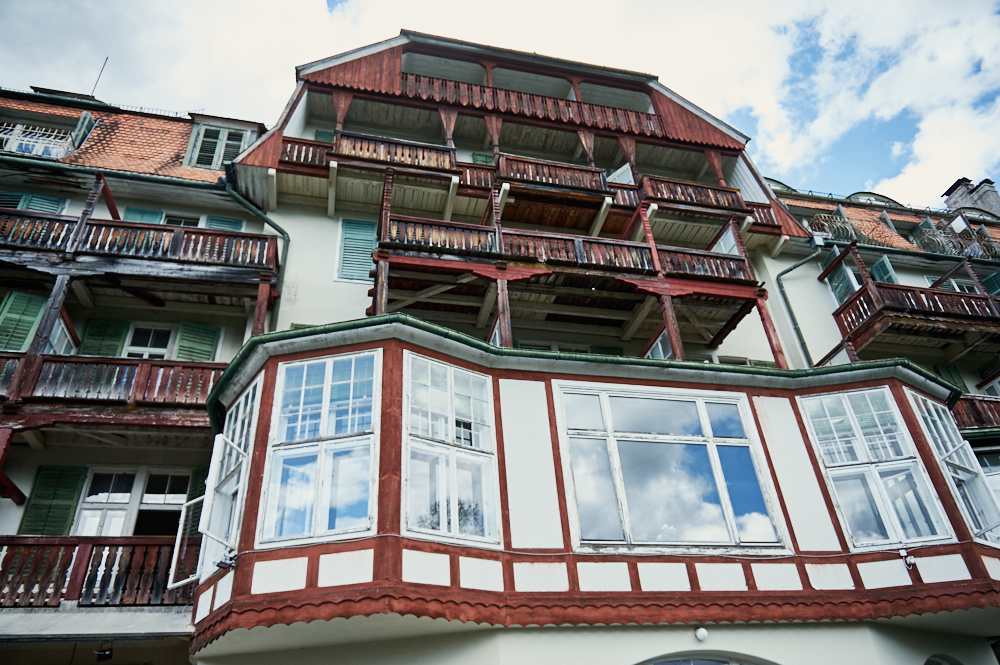Vienna had a very warm winter so far but there was at least one morning with a tiny bit of snow. And we tried to make the most of it! Lena dreamt of a photoshoot in the snow with her trusty companion Catchi.
An early morning in Sulz, near Vienna.
With 39° in Vienna, it was about time for my next escape from the heat and the city – cold thermal water here I come!
It took me about 45 minutes by train from Vienna Central Station to Bad-Fischau-Brunn and then it´s just a 5 to 10 minutes walk to the thermal bath. It might not look as grand as the Themalbad Bad Vöslau from the outside but also looks back on a long history which started with the Romans who already knew about the vitalizing power of the Fischauer mineral water.
In 1872 the foundations stone for today’s bath was laid and in 1898 bought by Erzherzog Rainer who had it extended to today´s size in 1899. The green-yellow wooden cabins are cultural remains of the K & K times. Back then there was a women and a men pool – today everyone may swim wherever he or she wants to….
The Fischauer Thermalbad remained under the ownership of the Habsburg family until 1992 when the municipal of Bad Fischau bought it. It´s the perfect place to spend a hot summer day in cold water, lying under old trees and feeling the old Sommerfrische flair and charm.
Photos and short film sequences are taken with my phone.
After visiting the Grande Dame Südbahnhotel we went back to the Kurhaus Semmering – another stunning former Grande Hotel (Spa) of the region. Facing towards the south-east and surround by the forrest.

In 1907 Karoline von Neumann, whose late husband architect Franz von Neumann built many of the villas in Semmering, and Dr. Franz Hansy proposed the building of a spa above the train station Wolfsbergkogel with view of the Sonnwennstein. Not only a beautiful area but also know for it´s therapeutic effects.
Development and design was done by the two very known architects Franz von Krauß und Josef Tölk. The building is made out of reinforced concrete, the out- and inside is a mixture of Jugendstil, traditional and palace-inspired elements.
The Kurhaus took up to 120 guests at once, who could choose between quite big rooms with bath en-suite in the mezzanine to smaller rooms with shared baths in the upper floors. There was a fitness, a reading, music and playing rooms, gymnastics and tennis outside.